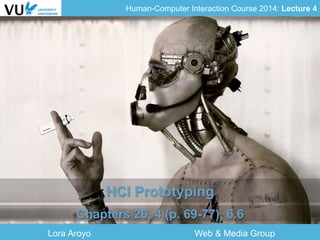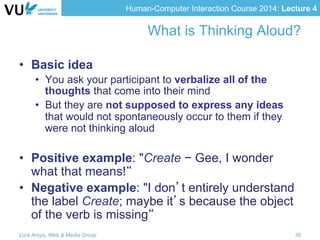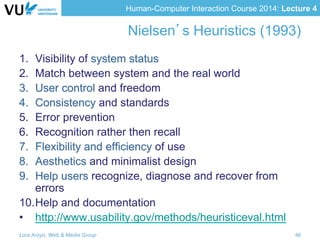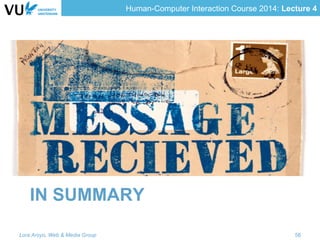This lecture covers various methods for prototyping and testing user interfaces, including paper prototyping, wireframing, and usability testing techniques like heuristic evaluation and cognitive walkthrough. Low-fidelity prototyping allows for early user feedback, while high-fidelity prototyping tests detailed tasks and processes. The lecture also discusses iterative design, with prototypes refined based on user testing to develop the final design.




























































